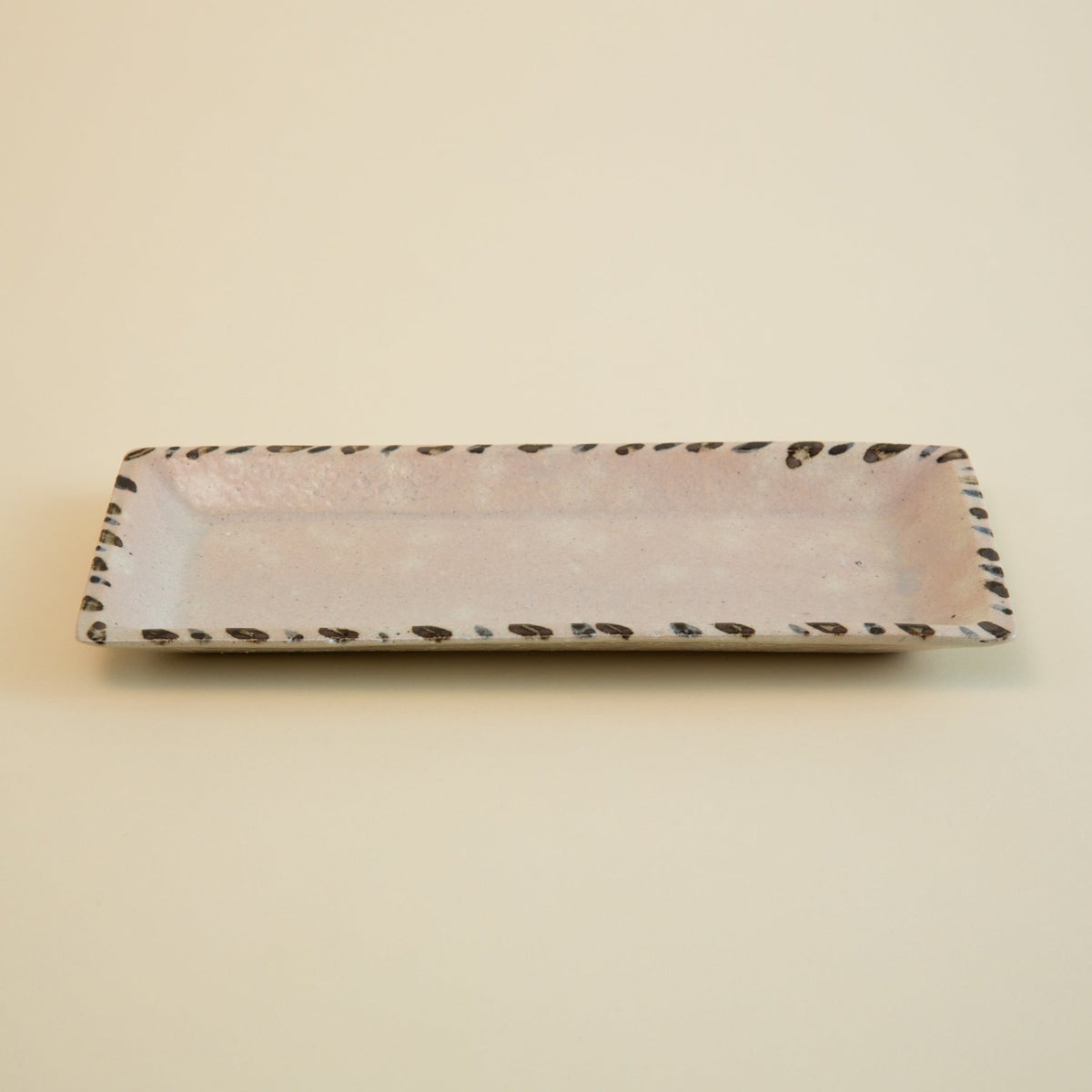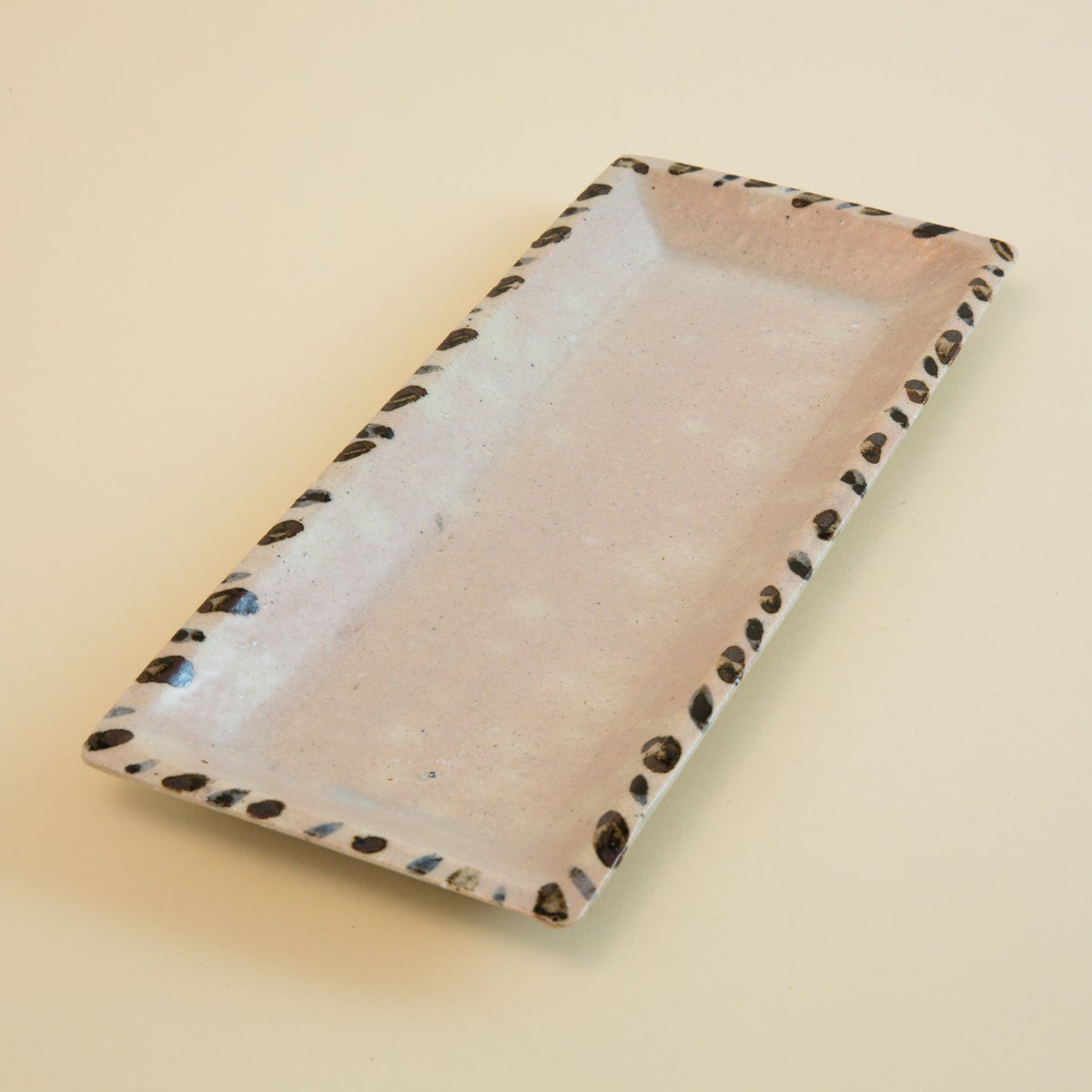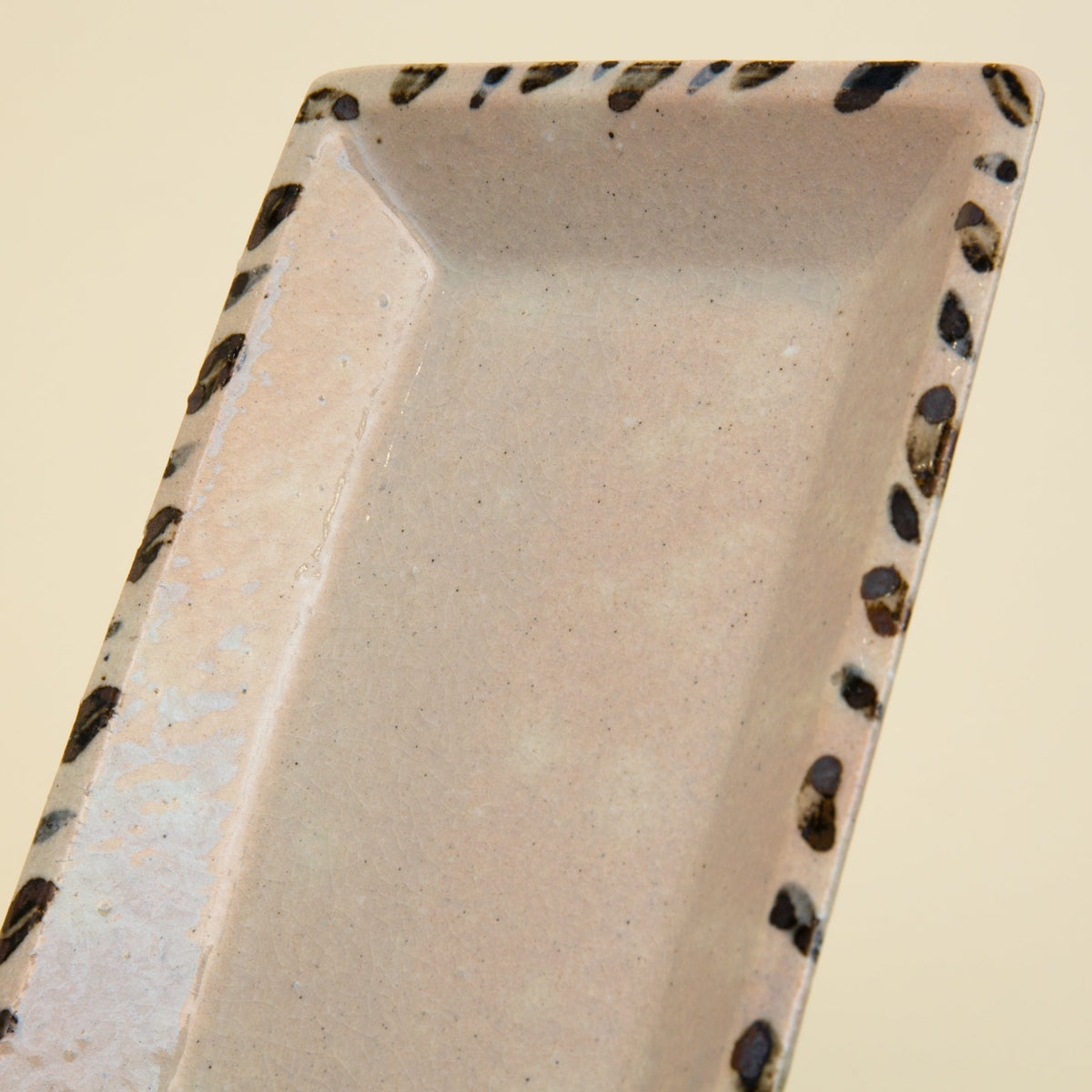Iga Rectangle Plate - Painting
Iga-yaki are named after Iga clay, and these ceramics have been made in the Mie prefecture of Japan from as early as the 7th century CE. The remarkable characteristics of Iga clay have made Iga-yaki particularly sought after throughout history. The clay beds in Mie were formed in ancient times when the entire province was submerged under the Biwa Lake. As a result, rich sources of plankton and other microscopic organic matter exist within the clay. These evaporate during the intense firing process, producing a durable, porous material with natural heat retention. The clay can be rough and brittle and this texture requires incredible expertise to handle. Experienced potters spend a life-time perfecting the technique. This means production is limited and each handmade vessel is entirely unique.
Iga ware is finished with locally sourced glazes, to produce unique and interesting results. Slight differences created by the changing conditions of the Iga-yaki kilns from season to season, and the different placings of the bowls when firing can alter the color. This plate has the glossy finish of Sekkai, a complex, shining white glaze made of limestone. During firing process, the layers of glaze become clear and glass-like, revealing the creamy, base color clay underneath. This means the color of the object is dependent on the clay, creating subtle ranges of cool grey to warmer, blushed whites.
All Iga-yaki must go through a traditional preparation process called Medome, in order to prevent staining. Rinse white short grain rice in a pot of water until the water turns milky white. Take the rice out and place the Iga ware in the water. Gently cook it over low heat for 20-30 minutes and then let cool. After completely cooling, remove the Iga ware and rinse it thoroughly. Once it has completely dried, it is ready for use. For the best maintenance, towel drying after each use of the Iga ware is recommended.
Please note that the painting design varies for each individual piece
Measurements: L: 12.75" H: 1" W: 5.5"
Do not use dishwasher.




